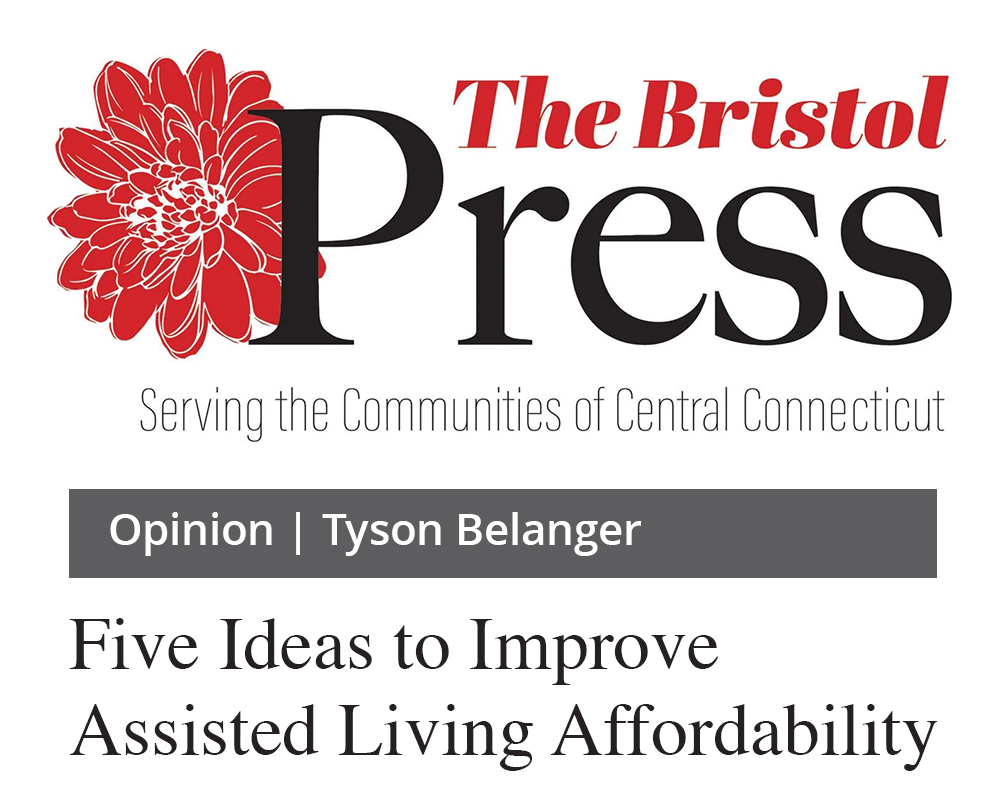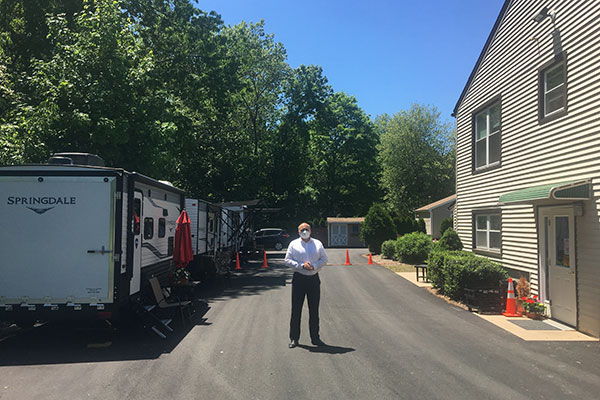
2024 Improvements
February 2, 2025
Customer Recommendations, Family Survey 2024
March 15, 2025
2024 Improvements
February 2, 2025
Customer Recommendations, Family Survey 2024
March 15, 2025
Bristol Press Opinion Page 8/9 March 2025
Connecticut has lost about 10% of its nursing homes since 2020. This raises the question of how we provide affordable care options for Connecticut’s growing population of disabled seniors.
I am the owner of a small, assisted living home in Bristol. We earned the Small Business Administration Connecticut Family-Owned Business of the Year in 2024. We care about our residents. We feel distressed when long-time residents cannot afford to stay with us.
In Connecticut, assisted living facilities cannot participate in Medicaid. Some residents run out of money and must transition to costly Medicaid in skilled nursing facilities. The Connecticut Legislature should help seniors keep more choice by making assisted living more affordable.
The best way to improve assisted living affordability is through the Connecticut Home Care Program for the Elderly (CHCPE). CHCPE helps low-asset seniors pay for at-home or assisted living care. In our assisted living home, it helps one in six residents with up to $2,948 monthly.
CHCPE can make a big difference for middle class retirees. In our home, it helped a retired Bristol police officer. He combined his pension, World War II veteran aid, family help and CHCPE. He stayed here, in the same apartment as his loving wife, through to his passing.
From a budget perspective, CHCPE saves money for taxpayers. By helping seniors afford at-home or assisted living care, the state of Connecticut spends less verses paying higher Medicaid rates to nursing homes. One nearby nursing home receives $10,379 per month for its residents.
How much money does CHCPE save? In 2017, the Department of Social Services (DSS) estimated it saved Connecticut $360,873,052 since 2002 by reducing the use of nursing facility beds. This was $24 million per year, all while helping seniors choose where they wanted to live.
Connecticut would not be alone by investing in assisted living affordability. Ohio recently began $3,900 monthly aid, or $4,700 for seniors with dementia. Minnesota pays up to $6,000 monthly to about 8,000 assisted living residents. (Connecticut caps aid at 125 assisted living residents.)
At the federal level, bipartisan support recently passed the Senator Elizabeth Dole 21st Century Veterans Healthcare and Benefits Improvement Act. Like CHCPE, it helps veterans better afford assisted living and at-home care instead of needing Veterans Administration nursing facilities.
For Connecticut to improve assisted living CHCPE, here are five ideas.
First, CHCPE should be more equal between at-home and assisted living rates. Some at-home seniors hire live-in aides who work up to 16 hours daily, and CHCPE pays $7,370 monthly. Yet, for assisted livings with registered nurses and 24/7 care, CHCPE only reaches $2,948 monthly.
Second, CHCPE should be more fair about overall net worth. CHCPE does not count primary residences as assets. At-home seniors may receive CHCPE, even if they own valuable houses. In contrast, seniors with lower net worth may miss out by living in apartments or assisted livings.
Third, CHCPE should offer backpay. CHCPE approvals can take 3-6 months. Aid sometimes arrives too late to help. In contrast, when the Veterans Administration approves pensions with aid and attendance to help cover senior care, it backpays to the original month of application.
Fourth, seniors should receive more guidance through confusing applications. DSS might offer online tutorials. It might also train assisted living and senior center staff. Better applications would be a welcome relief for the hardworking and conscientious DSS staff who process them.
Fifth, Connecticut should open Demonstration Project participation. CHCPE pays for assisted living care. However, for residents at just four Demonstration Project assisted living facilities, Connecticut pays for care, plus room and board. Participation should be open to more homes.
Change is happening. In 2024, the State Senate unanimously passed Bill 316 to study assisted living assistance. This year, House Bill (HB) 5363 proposes a similar study, and Senate Bill (SB) 986 promises to explore options for CHCPE funds. More CHCPE bills are on the way.
I fear change will be slow. As we wait, more seniors will face unwanted and costly Medicaid moves into nursing homes. Please ask your legislators to support HB 5363 and SB 986.



